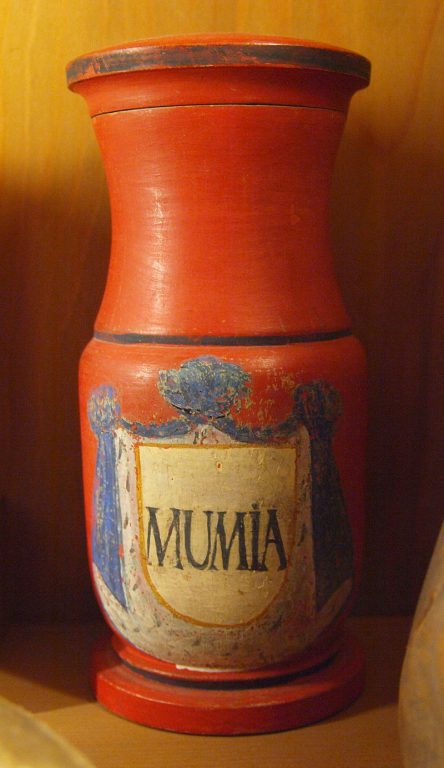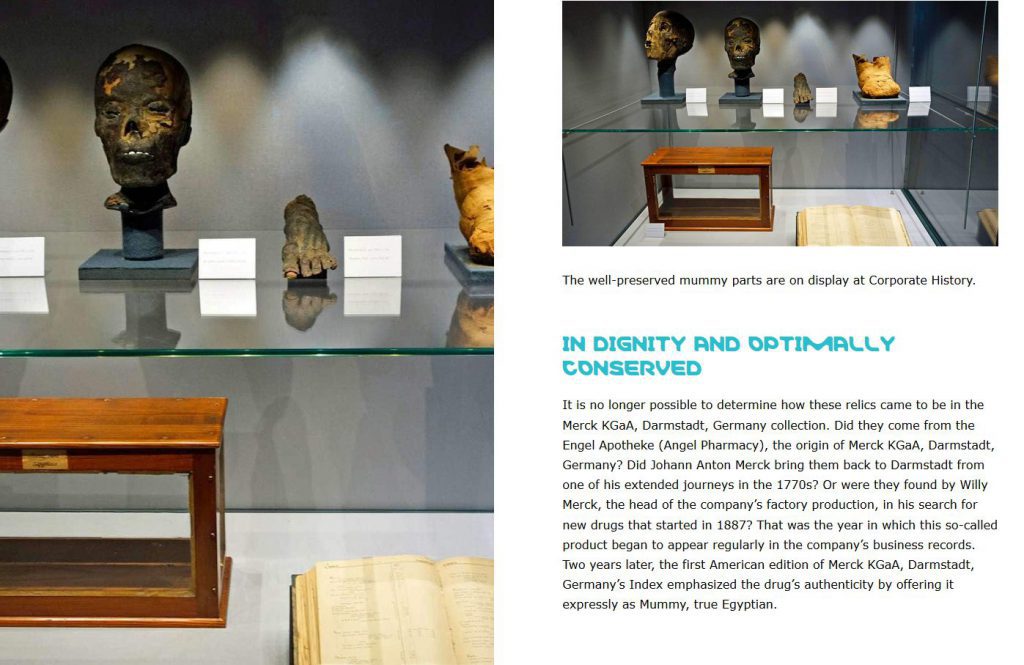Until 90 years ago, powder made from mummies, i.e. human corpses, was considered a useful drug in Europe, and available in pharmacies until 1924. I need to remind myself of this when reading about body-part juju in Africa. The practice arose from a misinterpretation of the Arabic word for bitumen, mumiya.
Here’s what Wikipedia has to say:

The third step in misinterpreting mummia was to substitute the blackened flesh of an entire mummy for the hardened bituminous materials from the interior cavities of the cadavers.[16] The ancient tombs of Egypt and the deserts could not meet the European demand for the drug mumia, so a commerce developed in the manufacture and sale of fraudulent mummies, sometimes called mumia falsa.[17] The Italian surgeon Giovanni da Vigo (1450-1525) defined mumia as “The flesh of a dead body that is embalmed, and it is hot and dry in the second [grade], and therefore it has virtue to incarne [i.e., heal over] wounds and to staunch blood”, and included it in his list of essential drugs.

See also this article (in English) published by German pharma company Merck.
An interesting article on bog bodies (in German).
